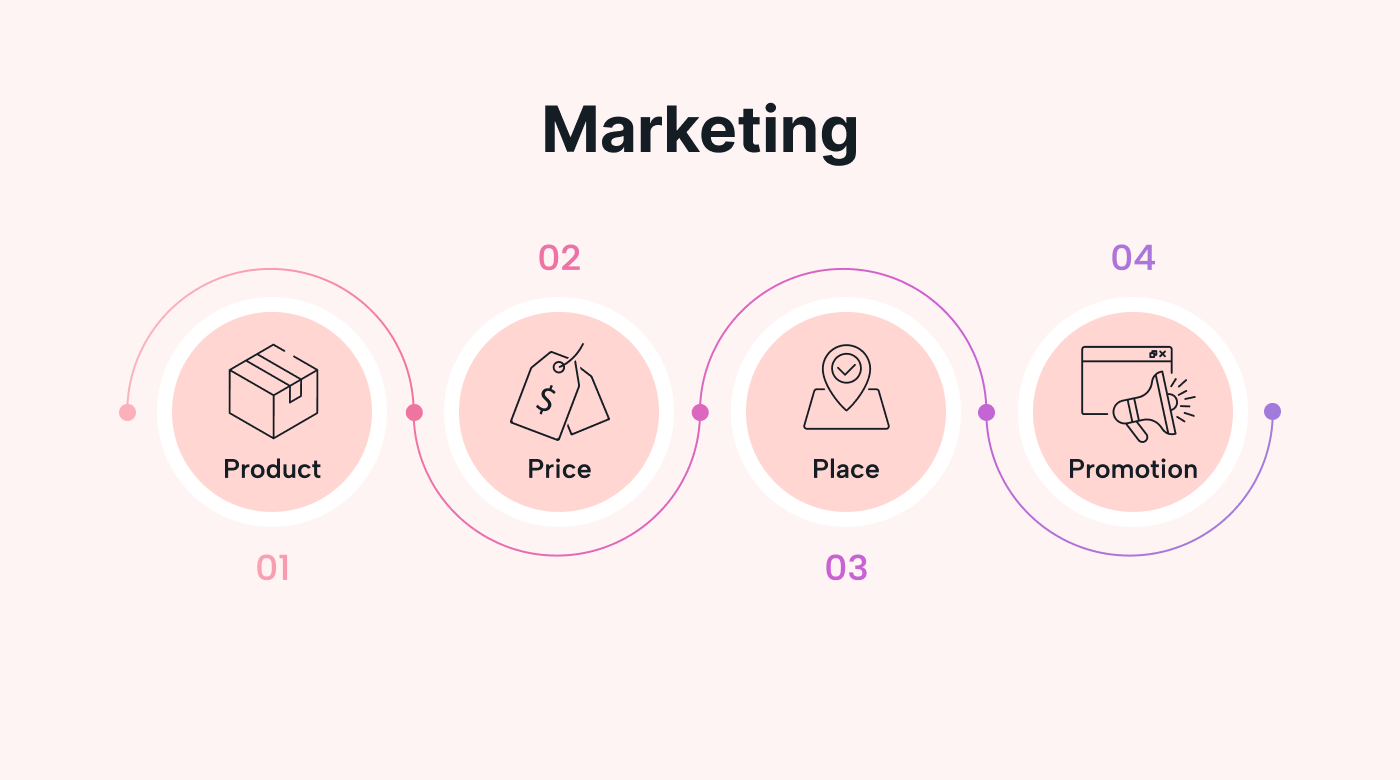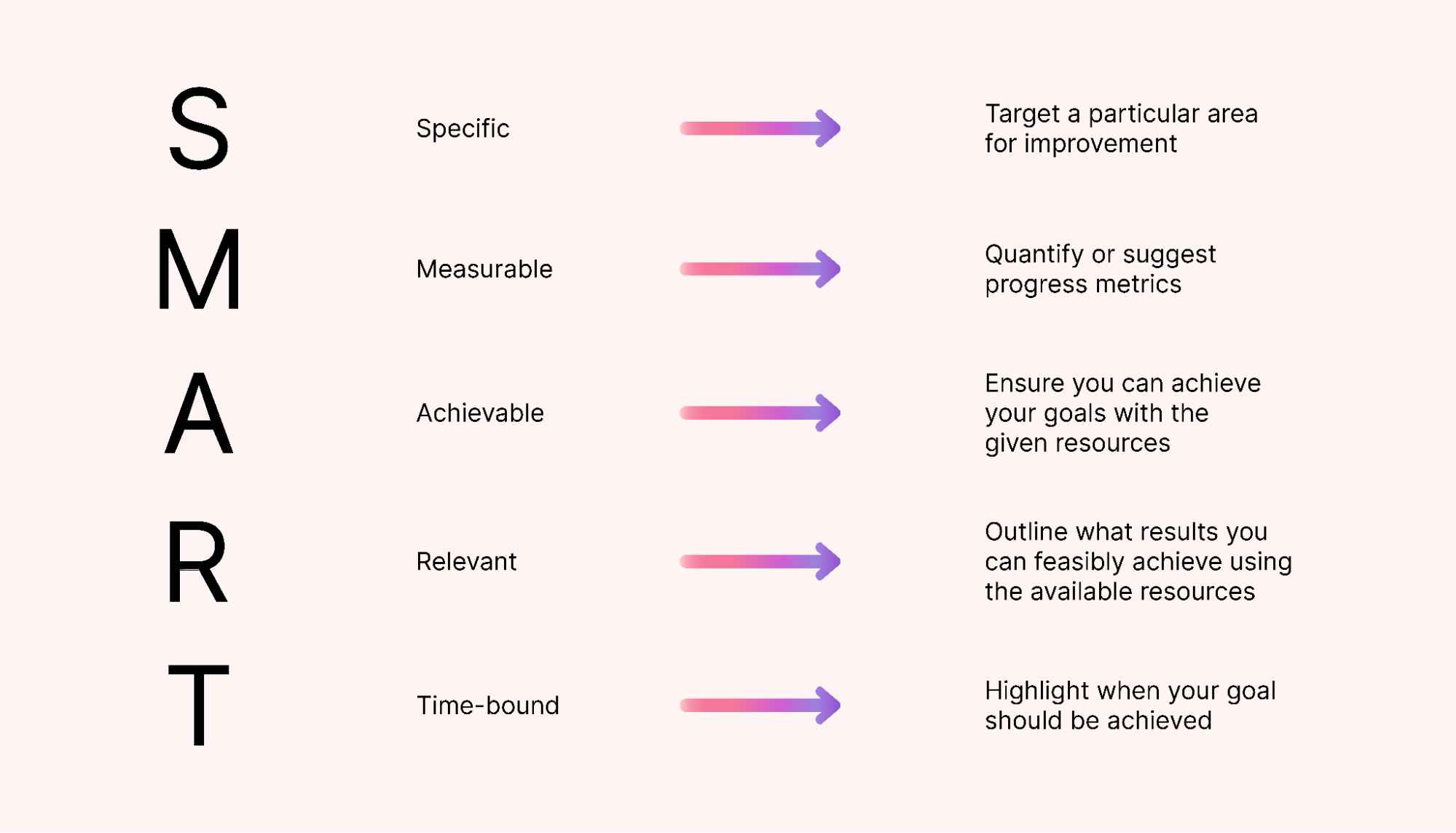Overwhelmed by the myriad of marketing advice out there and unsure where to start? We get it.
There are many ways to invest your marketing resources. However, taking steps that won’t help you achieve your goals can lead to wasted time and money. That’s why having a solid marketing plan is essential — it provides direction, aligns teams, and drives results.
But crafting the perfect plan amid the chaos is where things get tricky.
Our eight-step guide will help you streamline the marketing planning process in your business. From understanding marketing fundamentals to executing a marketing plan with precision, our guide is designed for marketers at every stage.
What is a marketing plan?
A marketing plan is a detailed blueprint that outlines your business’s marketing and advertising strategies for the future. Essentially, it acts as your road map for introducing and delivering your products or services to potential customers.
A good marketing plan isn’t static, either — it’ll grow and change along with your business goals and market trends.
The main purpose of a marketing plan is to help you prioritize your actions, allocate your resources, and set a course to hit your business objectives. Whether you’re aiming to launch a new product, enter a new target market, or simply boost your sales, a marketing plan is your guide to making informed decisions and navigating the marketplace effectively.
3 types of marketing plans
Marketing plans come in the following three forms, each of which is tailored to the strategic needs of a business:
1. Short-term marketing plan
Short-term marketing plans are like the sprinters of the marketing world, designed to achieve immediate goals. These plans typically span a year or less and are often used to respond to sudden market opportunities or competitive pressures. They’re perfect for businesses looking to capitalize on seasonal trends, roll out a new product, or push a time-sensitive promotion.
2. Long-term marketing plan
Long-term marketing plans are like marathon runners. They don’t focus on what’s immediately ahead. Instead, they look several years into the future. These plans are usually aligned with a company’s overarching vision and growth objectives.
Long-term marketing plans incorporate broader strategies that might include market development, customer relationship management, and brand-building. They are key to maintaining sustainable growth in the future.
3. Campaign-specific marketing plan
Campaign-specific marketing plans are always focused on a specific goal or campaign, such as a product endorsement, a partnership, an event, or a promotional activity.
These plans can be short- or long-term. They are highly detailed, outlining the strategies for the campaign, the timeline, the budget, and the expected outcomes. They’re particularly useful for businesses that want to push specific marketing efforts for a targeted audience.
Why does your team need a marketing plan?
Sixty percent of top marketers have documented marketing strategies. This is a clear indicator that success in today’s marketplace begins with a solid marketing plan.
Here are just a few of the reasons why a marketing plan is so important for a company:
Provides direction and focus
A clear marketing plan is a powerful tool that helps prioritize and guide your team’s marketing initiatives. Because it clarifies the goals that need to be achieved, your team has a clear direction. Your team is, therefore, less likely to get sidetracked by low-priority tasks or distractions.
With an established marketing framework, you ensure that each marketing activity isn’t just a shot in the dark but a strategic move aligned with your business objectives.
Aligns team on common goals
A marketing plan unifies team members toward common goals and objectives. It helps break down silos and facilitates collaboration, as all departments move forward together rather than pull in different directions.
 |
When everyone, from content creators to sales personnel, works from the same script and are on the same page, you not only maximize efficiency but also ensure that your brand message is always consistent.
Facilitates effective resource allocation
A solid marketing plan means every dollar of your budget and every hour of your workforce is spent wisely. This plan helps you use your available resources wisely on the tasks that give you the most in return. As such, it stops you from wasting resources.
A marketing plan concentrates your marketing efforts on what works, allowing you to invest in the right channels, tactics, and initiatives that align with your customers’ needs.
Measures performance
Measuring performance is one of the most important parts of the marketing process since it tells you if your investment and efforts are working. For instance, over 60% of marketers measure the success of their content marketing strategy through sales.
A strategic marketing plan lays out key performance indicators (KPIs) and offers concrete metrics for evaluating the effectiveness of your marketing efforts. This data allows you to make informed and accurate adjustments and offers insights into your future strategies.
Prepares your team for challenges
A marketing plan can keep your business proactive rather than reactive by anticipating potential market shifts and obstacles. It helps you navigate current market conditions while preparing your business strategically for whatever lies ahead.
4 common pitfalls in marketing planning
There are several challenges that can derail a marketing plan’s effectiveness. Acknowledging these common mistakes is the first step toward avoiding them altogether.
1. Overlooking customer feedback
The next time you’re tempted to ignore a customer review, pause and reconsider. Surveys show that an overwhelming 90% of customers look at reviews before making a purchase.
 |
Ignoring customer feedback could damage your reputation and jeopardize customer loyalty. Prioritizing it, however, can help you refine your products and services to match what the market wants.
2. Ignoring market trends
Staying on top of the newest market trends can make all the difference between leading the pack and chasing it. Companies that turn a blind eye to emerging trends miss out on opportunities for innovation and risk falling behind more agile competitors.
Remaining experimental and embracing trends often leads to the discovery of new markets and fresh avenues for customer engagement.
3. Lack of flexibility in strategy
A marketing strategy that’s too rigid can be as detrimental to a company as not having a strategy at all. Without flexibility, your company might miss out on potential growth opportunities or be unable to adapt to new market conditions.
Since the market is dynamic, having a flexible approach will help your business pivot quickly in the face of unexpected challenges and opportunities.
4. Failing to review and adjust
Without periodically reviewing and adjusting your marketing strategy, you’ll likely become stagnant. It’s important to consistently analyze and adapt your marketing efforts to stay relevant and avoid repeating outdated practices.
Regular reviews ensure your marketing plan evolves with both market needs and your company’s growth objectives.
The 4 Ps of marketing
The success of a product or service is often only as good as the strategy behind it. That’s where the four pillars, or Ps, of marketing — product, price, place, and promotion — come into play.
The 4 Ps of marketing are key components of your marketing mix, as they define the way in which you bring a new product or service to market. As such, integrating them into your marketing planning process helps ensure that every aspect of your product offering is aligned with market demands and your business goals.
 |
1. Product: Designing a solution for your customers
The hero of any strategic marketing plan is your product. A good product not only fulfills a need or solves a problem but also resonates with your target customer’s desires and pain points. Understanding your target customer’s wants and needs will steer you toward innovative product development and help you create something that appeals to them.
Moreover, it’s important to differentiate your product or service offerings from those of your competitors. Creating a unique value proposition sets your product apart in a crowded market.
2. Price: Deciding on the best cost strategy
Setting the right price is a balancing act. The key is to find that sweet spot where customers feel they’re getting value for their money and the business is making a profit.
Pricing a product or service too high might deter potential buyers, and pricing it too low could make it seem poor-quality.
Develop a keen market awareness, understand competitor pricing, and choose strategic positioning to nail your pricing system. The goal is to align your value proposition with customer perception; the price should reflect the benefits and experience your product or service promises.
3. Place: Choosing where and how to distribute your product
Then, there’s where and how your product will reach the consumer. You’ll need to place your product in the right locations and platforms — where your target market is most likely to make a purchase. This could be online through an e-commerce website with global reach, in a local boutique visited by a specific demographic, or a combination of both.
Your product or service should be readily available and conveniently accessible to potential customers. Determine your customers’ shopping habits and preferences, and make purchasing your product or service as convenient as possible.
4. Promotion: Effectively communicating your offer
Promotion is the voice of your product. It’s how you communicate the value of your product to your customers.
Effective promotion is about crafting a compelling narrative that captures the value of your product. This can be achieved through a mix of marketing channels, such as social media campaigns, email marketing, influencer partnerships, and SEO strategies.
But think less about putting out ads and more about communicating a story that authentically engages and resonates with your target audience’s values and needs.
This part of your marketing strategy should convert awareness into action and turn prospects into customers and customers into brand advocates.
8 steps to perfect your marketing planning process
This all seems like a lot — we know. To keep things as simple as possible for you, we’ll walk you through the marketing planning process step by step.
1. Understand your business situation
The critical first step in the marketing planning process is to understand your current business situation. Begin with a thorough analysis of your current market position. This means identifying where you stand in relation to your competitors and the industry.
This evaluation should also highlight the company’s internal strengths and weaknesses so that you have a clear idea of what can be leveraged and what needs to be improved.
Using a business model canvas is an effective strategy for this stage. This framework will help you visualize the key components of your business, including your customer segments, value propositions, channels, customer relationships, revenue streams, key activities, resources, partners, and cost structure.
2. Identify your target audience
To effectively reach and engage your potential customers, you must first understand who they are.
Profile your customers by looking closely at their ages, genders, lifestyles, habits, values, and daily challenges. Getting to know their preferences and pain points will help you create marketing messages and product solutions that resonate deeply with them.
Moreover, developing buyer personas — a representation of your ideal customer — can provide insights into what your customers really want and how they decide to buy. This step helps ensure that your marketing efforts are tailored to the specific needs and desires of the people most likely to purchase your product or service.
3. Set clear objectives and goals
Next, define what you want to achieve and how you’ll measure success. By establishing measurable outcomes, you’ll provide your marketing team with a clear target to aim for. It’s important that these objectives align with the broader aims of your business, as this will help ensure every effort contributes to your overall mission and vision.
 |
Set SMART goals — goals that are specific, measurable, achievable, relevant, and time-bound. These will help to keep your marketing efforts focused and provide a benchmark on which you can track progress and make any necessary adjustments.
4. Conduct a marketing audit
A marketing audit will give you a clear overview of the internal and external factors that can impact your marketing strategy. A SWOT analysis can help you determine your company’s strengths, weaknesses, opportunities, and threats.
By evaluating these factors, you can identify your competitive advantage in the market and uncover areas where strategic adjustments are necessary. Using the insights gained from a SWOT analysis specifically, you’ll be able to develop a marketing strategy that’s resilient and adaptable and that amplifies your company’s distinct strengths.
5. Define your unique selling proposition
Crafting your unique selling proposition (USP) is a chance to make your brand’s voice heard. It’s the stage where you define the attributes that make your offering stand out from the rest. Why should customers choose you? Is it the unparalleled quality, the innovative features, or the exceptional service that comes with your product or service?
These questions are central to creating a compelling value proposition. This proposition distinguishes your brand from its competitors and highlights how your product or service offerings can meet customers’ needs.
6. Decide on your marketing strategies and tactics
Once you’ve defined your USP, it’s time to choose the appropriate channels and methods to market your product or service.
Many companies adopt a multichannel marketing approach to maximize their reach and engagement. Given the wide reach of social media platforms, these channels can be pivotal in your strategy.
To illustrate, as of October 2023, Facebook has 3 billion users, YouTube, 2.4 billion, and Instagram, 2 billion.
Prioritize channels that generate the highest impact and ROI, focusing on where your target audience is most active and receptive. Your marketing strategies should leverage the 4 Ps discussed earlier to ensure a cohesive approach that connects with your audience.
Making a marketing calendar with Motion can also help you and your team stay aligned with different channels, strategies, and campaigns.
 |
7. Allocate marketing budget and resources
Efficient budgeting and resource allocation are key to maximizing your financial and time investments. In fact, marketers who meticulously calculate their ROI are 1.6 times more likely to secure increased marketing budgets for their initiatives.
It’s important to strike a balance on spending to maximize results. A good bet is to use historical analysis of past campaigns as a guide for financial planning.
Resources also include your team’s skills and time. Fortunately, tools like Motion automatically delegate tasks among team members and allow you to track these individuals’ progress so that every dollar and hour goes toward achieving your marketing goals.
8. Monitor, evaluate, and adjust
One of the most important steps in the marketing planning process is to track your progress against set goals. Monitoring KPIs allows you to determine whether your marketing activities are delivering the desired results.
Feedback from customers and team members is a valuable performance metric that’s often overlooked. Specifically, insights from customers can pinpoint areas for product improvement or help identify market trends, and input from team members can shed light on internal processes that need fine-tuning. Maintaining open communication is necessary for a responsive and agile marketing strategy.
Motion helps you communicate directly on campaign project boards to keep communication flowing. You can also set reminders to review and adjust your marketing plan — even when other work gets in the way.
 |
Streamline and optimize your marketing efforts with Motion
Maximize your marketing success with Motion. Simplify not only the marketing planning process but also your marketing plan’s execution with automatic task delegation, progress tracking, an intelligent calendar, and clear communication.
With project management software like ours, you’re 426% more likely to succeed. Make all your marketing efforts count by switching to Motion.





